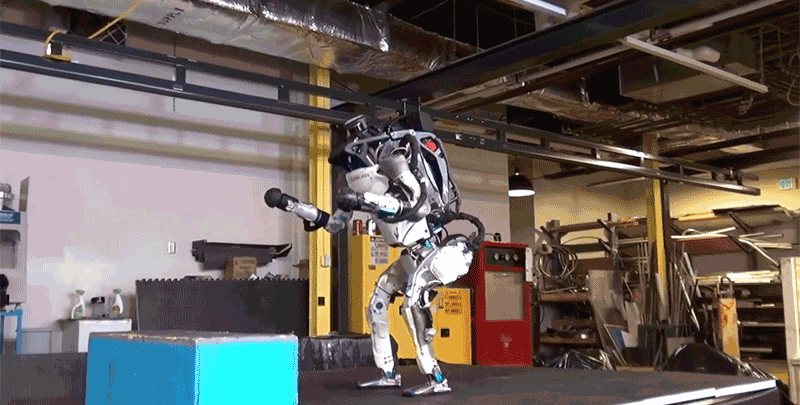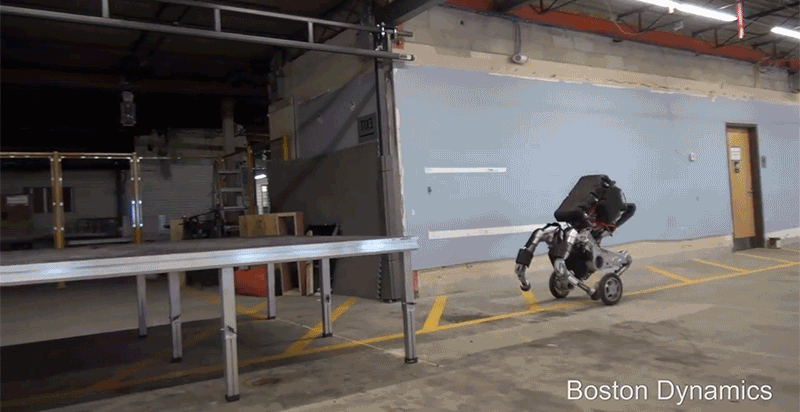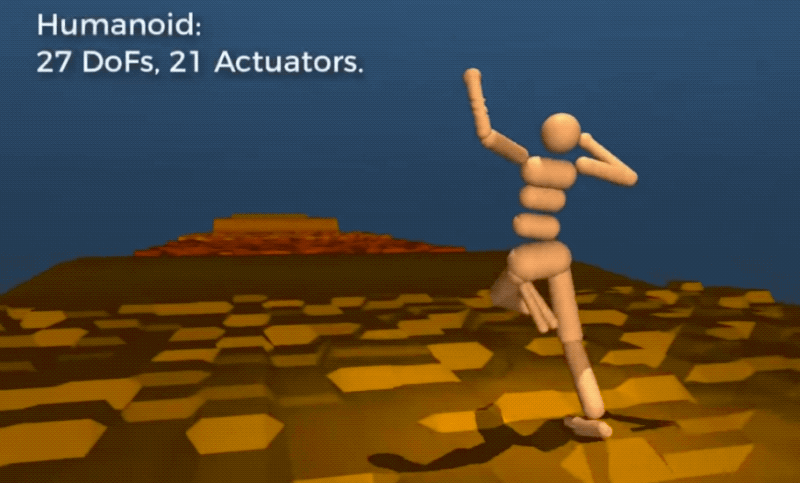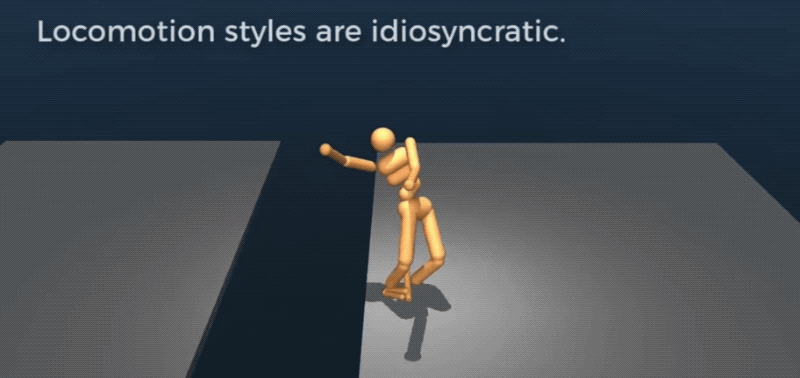
The Most Futuristic Predictions That Came True in 2017
By George Dvorsky, Gizmodo, 18 December 2017.
By George Dvorsky, Gizmodo, 18 December 2017.
The trouble with the future is that it never seems to arrive. That’s why we call it the future. We consequently have this bad habit of taking the present, and all the wondrous and horrific things it has to offer, for granted. As a reminder that we’re actually living in the future of a not-so-distant past, we present to you a list of the most futuristic things that happened in 2017.
1. AI continued its steady march toward the Singularity
Image: DeepMind
This year was a huge one for artificial intelligence (AI), and we’re clearly in the midst of a bona fide hype cycle. But while this boom period for AI will most certainly experience an inevitable bust (at least on the economic side), there were some important developments and breakthroughs in the field, several of which involved some of humanity’s favorite - and most complicated - games.
Just a year after DeepMind’s AlphaGo became the first artificial intelligence to defeat a grandmaster at the game of Go, a souped-up version of the program, dubbed AlphaGo Zero, taught itself how to dominate the ancient board game from scratch. Using reinforcement learning, the system acquired literally thousands of years of human Go knowledge after just three days of playing against itself, and without any external help. In a tournament that pitted AI against AI, AlphaGo Zero defeated the regular AlphaGo by a whopping 100 games to 0, signifying a major advance in the field. As the DeepMind researchers stated in their accompanying Nature paper, “Our results comprehensively demonstrate that a pure reinforcement learning approach is fully feasible, even in the most challenging of domains: it is possible to train to superhuman level, without human examples or guidance, given no knowledge of the domain beyond basic rules.” It was a small step for AI, a giant leap towards humanity’s inevitable obsolescence.
Image: AP
In May 2017, and in a related development, AlphaGo beat the world’s best human Go player, 19-year-old Ke Jie, in a best-of-three mini-tournament. The victory affirmed Alpha Go’s position as the best Go player in the world. And in December, a modified version of the program, simply called AlphaZero, became the most dominant chess-playing entity on the planet after defeating the bot that previously held that title.
Speaking of ruining games for humanity, a machine named Libratus defeated the world’s best Texas Hold’em poker players. This accomplishment is arguably more impressive than the one achieved by AlphaGo, as the system, developed by computer scientists at Carnegie Mellon University, has to work with incomplete information (e.g. the AI can’t see other players’ cards, and it has to deal with human factors like bluffing). Experts say Texas Hold’em poker is the “last frontier” of game solving, and an important step towards building more human-like intelligence.
Finally - and just to add insult to injury - Microsoft built an AI that shattered the Ms. Pac-Man high score. Sigh.
2. A functional artificial womb that actually made us gasp
For years we’ve been told that an artificial womb is possible, but in 2017 researchers from the Children’s Hospital of Philadelphia achieved a breakthrough that has us thinking it’s really going to happen.
Image: The Children’s Hospital of Philadelphia
In tests, six premature fetal lambs were placed in fluid-filled plastic containers resembling zip-lock bags. The lambs grew in the device as they would in a conventional womb, developing in a temperature controlled, near-sterile environment. They breathed in amniotic fluid, their hearts pumped blood through their umbilical cords into a gas exchange system outside of the bag, and monitors measured their vital signs, blood flow, and other important functions. The lambs, which were at the equivalent of the 23 to 24 week gestation stage of human preemies when they entered the bags, developed normally. The breakthrough offers a viable and potentially superior way of bringing premature babies to term, but it could still be decades before we see the technology applied to humans.
Should it ever go into widespread use, this artificial womb would greatly complicate the abortion debate in the United States, where viability outside of the womb is a critical consideration.
3. Robots got even scarier

Credit: Boston Dynamics/YouTube
In 2017, Boston Dynamics’ ATLAS became a backflipping cyborg supersoldier, and its newest robot, Handle, moved - and jumped - like a two-wheeled donkey. Meanwhile, the tech company’s robotic dog, Spot Mini, got a cooler, sleeker, more terrifying look.
These advanced, highly agile robots started to make their first appearances only a few years ago, and their rapid rate of development is nothing short of astounding.

Credit: Boston Dynamics/YouTube
Also in 2017, robots started to teach other robots new skills, and this heavily armored robot was voted most likely to trigger the robopocalypse. Indeed, robots and drones got so scary in 2017 that the United Nations hosted a discussion on banning autonomous killing machines at a conference on conventional weapons.
4. Rogue biohackers started to genetically modify themselves
Image: Ford Fischer
It can take anywhere from 10 to 15 years for a drug to go from a concept to an unintelligible prescription on your doctor’s notepad. And in some cases, like with experimental gene-editing technologies, the vast majority of these interventions still aren’t legal. Impatient with the slow pace of progress and the conventions of responsible society, some biohackers decided to take matters into their own hands and administer these experimental treatments on themselves.
In October, for example, 27-year-old computer programmer Tristan Roberts injected himself with a DIY HIV treatment on Facebook Live. “You can’t stop it, you can’t regulate these things,” he said while preparing for the injection. “But you can create an environment where there’s transparency.” Biohacker Josiah Zayner did something similar, injecting himself with a CRISPR modified gene to promote muscle growth in front of 150 people at a San Francisco biotech conference. Desperate cancer patients are also hopping aboard the DIY train. Alarmed by these developments, the U.S. Food and Drug Administration warned biohackers that what they’re doing is against the law, and alarmed scientists made a similar case.
5. The FDA said certain gene therapies are A-OK
Image: NIH
While biohackers experiment with DIY gene-editing, progress is being made in getting regulated gene therapies to market. Once the boogey-man of biotech, genomics is increasingly being accepted by mainstream medicine - and that’s a good thing, given its potential to treat an assortment of hereditary and other types of diseases.
In August, the FDA greenlighted a drug called Kymriah - the first CAR T-cell therapy to treat children and young adults whose leukemia doesn’t respond to standard treatments. A few months later, the regulatory body approved another CAR T-cell therapy, one that treats aggressive non-Hodgkin lymphoma in adults (CAR T-cell therapies genetically modify a patient’s blood cells to attack cancer).
The floodgates are poised to burst open as the FDA green lights other gene-related tech, with pending approvals for treatments of blindness, sickle cell disease, and other hereditary disorders. We are truly in the midst of the biotech revolution.
6. Tricky AI made it increasingly difficult to discern fact from fiction
So this whole “fake news” phenomenon is about to get even worse, with AI as the enabling technology. 2017 saw several advances in this area.
AI startup Lyrebird developed a voice-imitation algorithm that can mimic any person’s voice, and read any text with a predefined emotion or intonation. Impressively, it can do this after analyzing just a few dozen seconds of pre-recorded audio.
Relatedly, computer scientists at the University of Washington developed a system that uses machine learning to study a person’s facial movements and then render real-looking lip movement for any pre-existing clip of audio. In some disturbing examples, they made former President Barack Obama utter words of their choosing in video clips.
Meanwhile, Nvidia researchers developed a machine-learning algorithm that can take a video of a wintry country scene and transform it into a summer setting. And perhaps most upsetting of all, AI was used to create fake porn, in which the faces of female celebrities, including Gal Gadot, Scarlett Johansson, and Taylor Swift, replaced those of the porn actors.
All of these technologies are still fairly primitive and unconvincing, but it’s clear that this tech will be able to fool the average human soon.
7. Corporations said they want to computerize your brain
Scientists have been tinkering with neural interface technologies for years, using implanted chips to connect the brains of various lab animals to computers. In 2017, it became clear that this idea has traction in the corporate world.
In March, Elon Musk announced Neuralink, a startup which aims to connect human brains to computers. Using implanted chips, this so-called “neural lace” technology would create a “direct cortical” interface that could be used to upload or download thoughts to a computer, or boost a person’s cognitive capacities. All this is still highly theoretical, but Musk says it’s “[d]ifficult to dedicate the time, but existential risk is too high not to.” Musk is hoping to use the technology (i.e. cognitively enhanced humans) as a way to counter poorly programmed or misguided artificial super-intelligence. Seriously.
But Neuralink isn’t the only game in town. Other similar ventures are being considered by IBM, Bryan Johnson via his Kernal project, and Facebook.
8. An AI taught itself to ‘walk’ like a human

Finally, and in another DeepMind AI development, a virtual, bi-pedal robot used reinforcement learning to figure out how to walk - and the results were adorable if not completely hilarious (Or, in the diplomatic words of the DeepMind developers, the AI developed locomotion styles that were “idiosyncratic.”)

See, the thing about AI is that we can ask it to do a thing - we just can’t be sure what form that final thing will actually take.








No comments:
Post a Comment
Please adhere to proper blog etiquette when posting your comments. This blog owner will exercise his absolution discretion in allowing or rejecting any comments that are deemed seditious, defamatory, libelous, racist, vulgar, insulting, and other remarks that exhibit similar characteristics. If you insist on using anonymous comments, please write your name or other IDs at the end of your message.